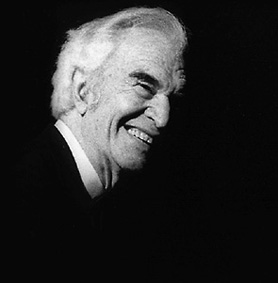
Biography, CDs and concert review
Dave Brubeck has died today, just one day before his 92nd birthday. Another jazz legend has left us. His music will remain. Sheet music by Dave Brubeck [December 5, 2012].
Biography of Dave Brubeck
Dave (David Warren) Brubeck was born in Concord, California, on December 6, 1920. Until the age of 11, he received early training in classical music from his mother, a pianist and teacher. Two of Dave’s brothers are music teachers and four of his sons are professional jazz musicians.
By the age of 13, Dave was performing professionally with local jazz groups. He received a B.A. in music from the College of the Pacific in Stockton, California. He studied composition with the classical composer Darius Milhaud at Mills College in Oakland, California. From 1940-42 he played in The Band That Jumps. Then he joined the army and played with the Wolf Pack Band in Europe (1944-45). After discharge, he went back to study with Milhaud between 1946-49. With fellow students, Dave founded the experimental Jazz Workshop Ensemble which started recording in 1949 as the Dave Brubeck Octet. It included Paul Desmond (Paul Emil Breitenfeld: 1924-77), Cal Tjader and Bill Smith.
[added on April 7, 2010 thanks to our reader Paul Wood: The Dave Brubeck Octet, a formation mostly composed of Mills’ students, experimented with jazz. During this period, Dave performed with other bands in the San Francisco area to support his wife in children. In 1949, he created the Dave Brubeck Trio together with Cal Tjader on drums and Ron Crotty on bass. With this trio, Brubeck gained more notoriety, which led to recording with Fantasy Records. Brubeck’s superimposed music in 6/4 meter was considered an innovation, since jazz standards were in 4/4 meter. Some criticized it as lacking the swing essential to jazz.].
In 1949, Dave created the Dave Brubeck Trio with smooth-swinging bassist Gene Wright and hard-swinging drummer Joe Morello. In 1951, with the addition of the lyrical and witty alto saxophonist Paul Desmond , it became the famous original Dave Brubeck Quartet (1951-67). It was one of the most popular jazz groups of all time, selling millions of records. In 1954, Brubeck even made the cover of Time magazine. The LP Time Out, recorded and released in 1959, was the first jazz album to sell over one million copies.
Despite his popularity, Brubeck was an experimental musician who introduced unusual time signatures such as 5/4, 5/8, 9/8, 7/4 and 11/4 to jazz. Paul Desmond’s Take Five is in 5/4 metre. It was relased together with Brubeck’s Blue Rondo a la Turk in 9/8 metre, grouped 2+2+2+3, on Time Out.
In 1959, Brubeck appeared with Leonard Bernstein and the New York Philharmonic orchestra. In the early 1960s, he began to compose extended works including Points on Jazz for the American Ballet and the musical theater piece The Real Ambassadors, written with the help of his wife Iola, a lyricist.
In 1967 Brubeck disbanded the Dave Brubeck Quartet to concentrate on composing. In 1968, he formed a new quartet that included the more swinging Gerry Mulligan in place of the retiring Paul Desmond as well as Alan Dawson and Jack Six. They played together until 1972. Then, Dave began to play with his sons Darius (keyboards), Dan (drums) and Chris (bass guitar and bass trombone). They stayed together until 1974. Again, Brubeck retired to write extended works, including the oratorio The Light in the Wilderness.
From 1977 to 1979, Dave formed a new quartet with Jack Six, Rand Jones and Bill Smith (clarinet) or Bob Militello (reeds). In 1987, Brubeck composed and performed music for the papal visit. He has also played for every American president since John F. Kennedy. From the 1980s on, Dave received numerous awards, including a Lifetime Achievement award in 1996 from the National Academy of Recording Arts and Sciences.
In 1995, in celebration of his 75th birthday, Brubeck played two concerts in the National Cathedral in Washington, D.C. He performed an hour-long Mass, To Hope! (A Celebration) and premiered the choral work This Is the Day.
In his career, Dave Brubeck has collaborated with Louis Armstrong, Carmen McRae, Jimmy Rushing and many others.
Brubeck’s piano style is described by Feather/Gitler as “heavy in touch and thick with complex harmonies [which] evolved in later years into a richer more melodic, but no less provocative, form of expression”.
As the concert in Lucerne proved (see the review below), Brubeck still plays at his best and continues to compose. According to his manager, an album with new compositions is to be recorded this fall.
Biographical sources: Grove Online; Leonard Feather/Ira Gitler: The Biographical Encyclopedia of Jazz. Sheet music by Dave Brubeck.
The Dave Brubeck Quartet in concert
Lucerne, April 27, 2001
The Dave Brubeck Quartet’s concert in Lucerne, organized by All Blues, was – together with the performance of Dave Douglas’ Tiny Bell Trio in Winterthur – the highlight of this year’s Swiss jazz season so far.
On April 27, the salle blanche in Lucerne was sold out. It was conceived by the acoustics specialist Russell Johnson and the French architect Jean Nouvel and offers almost perfect acoustics thanks to its traditional shoe box hall-form. The quartet fully deserves such an outstanding place to perform. It was their second appearance at the salle blanche – the first widely-acclaimed visit took place in October 1999.
One could hardly believe that Dave Brubeck is over 80 years old. The American jazz composer, pianist and bandleader is a phenomenon. His sound is still cool, melodic and experimental, in short: timeless. He was accompanied by Robert Militello on saxes, flute and clarinet. Brubeck had first played with Militello in 1982. In 1997, Militello became a permanent member of the quartet. Drummer Randy Jones has been a cornerstone of the group since 1979. The English bassist Alec Dankworth – the son of jazz musician John Dankworth – is the youngest of the quartet. Born in 1960, he has played with Brubeck since 1998. For him, it is the last tour with the quartet.
The concert began rhythmically with drums and bass in Broadway Bossa Nova. After five minutes, the piano came into the foreground. The entertaining sound inflamed the public. There for June, written by Dave’s brother Howard, came next. Brubeck, in an introspective and charming solo effort filled the hall with warmth. Later, the rest of the quartet joined in. It was already clear, there was no weak element among the four men. They offered marvelous, chamber-music like moments, with the lyrical piano fading away in the end.
The quartet played the title song The Crossing, a new album to be released in autumn 2001. The pianist composed The Crossing on the Queen Mary II while crossing the Atlantic. It captures the mood on the ship and, above all, the sound of Queen Mary II leaving New York harbor. The sound is full of optimism. The saxophone has a leading role, pounding forward with full strength. The bass is melodic and virtuous. Then, the piano takes the lead, spreading joy in a frenetic rhythm which, in the end, is again taken over by the saxophone.
Another composition from the upcoming album, All My Love, was next. It is dedicated to Brubeck’s wife of 59 years. The ballad begins with a piano solo, later joined by the rest of the quartet in a sweet and tender manner. Why Not? or Porqué No?, another fresh tune, was next. It is an elegant and at the same time energetic tune, entertaining at the highest possible level.
Then, the quartet turned back to an intimate sound and played one of Brubeck’s big hits for the first time in the evening, In Your Own Sweet Way. The emotional depth was overwhelming, with Militello excelling on saxophone with his soft and smooth play.
The quartet did not fall into nostalgia but returned to the upcoming album with a tune entitled Randy Jones. One could easily sing “Randy Jones, Randy Jones” to this flamboyant spectacle, which of course included a dramatic solo by the drummer it was dedicated to.
After the intermission, the quartet made a dramatic entrance with Militello once more shining on saxophone in Traveling Blues. Next was Mr Fats, dedicated to Fats Waller. It’s popular sound with boogie woogie elements was orgiastic. The saxophone made the walls shake and Brubeck on piano offered some high-pitched notes which sent cold shivers through the public. Dave had worked with Cleo Brown, one of the greatest boogie woogie pianists, when he was 19. This was one of many stories he told that evening.
St Louis Blues with a melodramatic bass and drums beginning followed. The pianist explained that W.C. Handy had written the first theme like a tango. In other words: “The first blues started as a tango.” This is what Brubeck found out when he studied the original sheet music and this is the way he played it in Lucerne. A high point in an evening full of highlights.
Brubeck pointed out that “The Blues has always been the basis of jazz”. And he went on to introduce Koto Song which demonstrated the Japanese influence on jazz, with Militello doing some “wild things” on flute. But first, Brubeck played a tender melody on piano which installed a “Japanese” feeling. Later, Militello conjured up some magical and unusual tunes on transverse flute. It all ended in a contemplative feeling.
The inevitable Take Five came at the end of the concert. It was as forceful as ever and gave drummer Randy Jones a chance to perform another solo. As an encore, The Dave Brubeck Quartet offered Take the A Train. A memorable evening of some three hours of playing without any weak moment came to an end – with a fully deserved standing ovation.
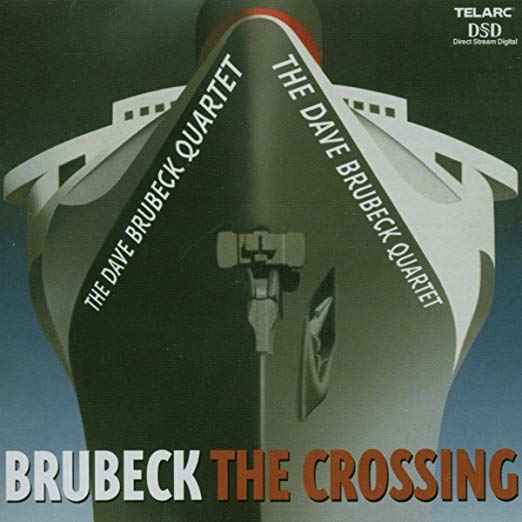
Added on December 8, 2001: The Dave Brubeck Quartet: The Crossing, Telarc, 2001. Get it from Amazon.com, Amazon.de, Amazon.fr, Amazon.co.uk. Among the album’s nine tracks are The Crossing, Why Not?, All My Love and Randy Jones which the Dave Brubeck Quartet played in Lucerne. A pure joy to listen to! Sheet music by Dave Brubeck.
CDs by Dave Brubeck
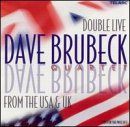
Dave Brubeck: Double Live – From The USA & UK. 2 CDs, Telarc, 2001. Get it from Amazon.com, Amazon.co.uk, Amazon.fr, Amazon.de. The Double-CD gives the best possible impression of the level on which Brubeck and his Quartet still perform today. Although at the concert in Lucerne in 2001, the program was largely different, the overall musical-impression was comparable. The Double-CD includes Take Five, Broadway Bossa Nova and Take the A Trai
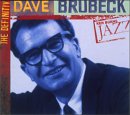
Ken Burns Jazz Collection: Dave Brubeck. Sony/Columbia, 2000. Get it from Amazon.com. The 15 tracks naturally include his best known recordings such as Take Five (Desmond), The Duke (Brubeck), In Your Own Sweet Way (Brubeck) and Blue Rondo a la Turk (Brubeck).
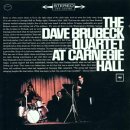
Dave Brubeck: The Dave Brubeck Quartet at Carnegie Hall. 2 CDs, Sony/Columbia, 2001. Get it from Amazon.co.uk, Amazon.de.
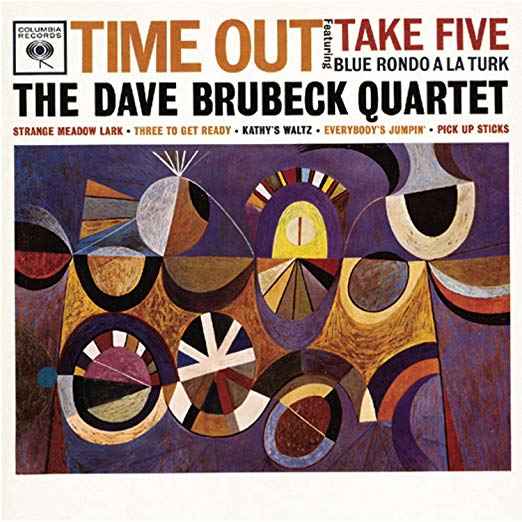
Dave Brubeck: Time Out. Sony/Columbia, 1997 (1959). Get it from Amazon.com. The re-edition of the original album that includes the first jazz instrumental to sell over a million copies: Take Five.